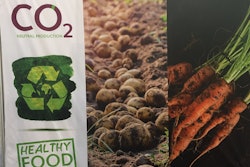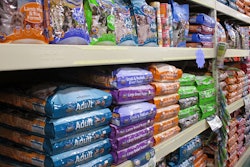
On April 26, 2021, the World Small Animal Veterinary Association (WSAVA) issued a press release (albeit very quietly) informing veterinarians that its Global Nutrition Committee (GNC) revised its “selecting a pet food” tool. It appears that WSAVA updated its document per my article, “WSAVA pet food recommendations: Useful or useless?” although some issues still do exist.
These much-needed updates are interesting considering that WSAVA stated the following in its press release: “The GNC’s work is generously supported by the Purina Institute, Hill’s Pet Nutrition and Royal Canin.
“WSAVA represents more than 200,000 veterinarians worldwide through its 115 member associations and works to enhance standards of clinical care for companion animals,” the release also stated.
Recommendations versus guidelines
For those of us familiar with the 2013 WSAVA tool, you will recall the title had the word “recommendations.” In the most recent update, that word was replaced with “guidelines.”
To some this change may seem insignificant; however, it is substantial, because guidelines provide directions, non-specific rules and advice to direct an action or behavior (in this case selecting pet foods). Recommendations, on the other hand, are generally taken as approvals, especially coming from an authoritative person or entity such as WSAVA (i.e., feed only these brands of food). This is apparent in that many veterinarians and consumers interpreted the prior version of recommendations on selecting pet foods as, “only companies X, Y and Z are recommended by WSAVA.”
Now the guidelines are written in a format that asks, “Does this company do these things?” That is in fact a far cry from a food recommendation. WSAVA even takes it a step forward by stating the following on the bottom of the page: “If the manufacturer cannot or will not provide any of this information, veterinarians and owners should be cautious about feeding that brand.”
Does the pet food company employ a nutritionist?
To WSAVA’s credit, they did try to update the section “What to look for in a brand” with guidelines for veterinarians to make proper decisions and, more importantly, to learn how to ask the right questions. Unfortunately, there is still evidence of generous support from WSAVA sponsors.
For example, the first question—“Do they employ a nutritionist?”—should be eliminated completely. For purposes of this discussion, I will focus on the callout of proper qualifications. What many people (including WSAVA) do not realize is that there are only 96 veterinarians board-certified by the American College of Veterinary Nutrition. Of those 96, 83% work for academia, veterinary practices or as consultants. Which means that 16 work for pet food companies.
When you take a deeper look at these 16 board-certified veterinarians working for pet food companies, only two work in “discovery” (i.e., research and development), and one is global vice president of R&D. The remainder work in marketing, communications or regulatory (one person). Crazy, right? I wonder if WSAVA knew that when they posed the question?
The reality is that simply asking if the company employs a nutritionist can lead people down the wrong path in decision-making because that nutritionist may never actually be involved in formulation or assessment of the product. This is where truth by omission can be used to mislead people in following the guidelines incorrectly. If someone is board-certified or has a Ph.D. in livestock nutrition, the company can still say, “We have a board-certified animal nutritionist on staff full-time.” The same is true with a board-certified nutritionist in scientific affairs, veterinary communications, consumer relations, academic and professional affairs and regulatory.
There is nothing wrong with where these people work in the company; however, that is not the intent of the question(s), nor is it being transparent. It does mean that none of these board-certified people touch the formulations in the marketplace nor does their employment validate any or all of their formulations.
What WSAVA got right
In short, WSAVA’s section “Who formulates the diet?” addresses what was completely lacking in the 2013 recommendations and what they failed to improve in this update (do they employ a nutritionist?). In this section, WSAVA gets at the line of questioning that truly matters: Who formulated your food and what are their credentials? They acknowledge the need to not simply have credentials but also the importance of proper experience. Anyone can do a pet food formulation; however, not everyone can bring it to scale knowing ingredient interactions, processing losses, impact of shelf-life and, more importantly, bioavailability.
In the section “What to look for on the label,” WSAVA does a good job of pointing out important aspects of the pet food label and for the most part is spot on. Unfortunately, I think WSAVA can set the standard higher for the “How many calories are in a cup?” feature. For those of us skilled in the trade, we know that the modified Atwater calculation has never truly been validated in dogs and cats for determining metabolizable energy (ME, in kcal/kg). In fact, this method has been shown to underpredict the actual kcal/kg, which will result in the overfeeding of dogs and cats (contributing to the obesity epidemic). Thus, this reinforces what I stated in my prior article regarding the need for stating actual digestibility values for each individual food. This way, caloric contents of food are determined via tested ME versus calculated ME.
Lastly, I am happy to see that WSAVA is starting to talk about “typical nutrient analysis” for a food. A typical nutrient analysis is an actual analysis of the final finished product versus a predicted analysis (i.e., via formulation software), which is what most pet food companies provide. The fact of the matter is, most pet foods available in the marketplace have never had their final formulations tested to prove their nutritional adequacy.
Again, I believe this is an opportunity for WSAVA to raise the bar and ask if a typical nutrient analysis is available for ALL the foods a pet food company makes, and if the analysis is accessible. I do not think a veterinarian has the time to be questioning every food that comes through the door; they simply want easy access (posted online) to the information the company SHOULD have if they properly launched the food (along with digestibility data).
Still a gap in quality control
In the section “What is the quality control process for ingredients and finished products?” WSAVA again had the opportunity to set the proper bar. For those of us experienced in the industry, we know that what nutrients a food is formulated for and what ends up at the end of the extruder are two different things. Asking the question, “Does the diet meet the profile based on analysis using a nutrient database?” does not tell you anything about the actual nutrients within the food—just what is predicted. What the veterinarian and everyone wants to know is what the typical nutrient analysis is.
I am struggling to understand why WSAVA framed the question this way for the quality control section, yet said it correctly in the contact information section (that the company should be able to provide a typical analysis).
Lastly, WSAVA missed the opportunity to set the standard for quality control. For those who read my last article, we discussed how companies can say they are following all the procedures when in reality they are not. The classic example will always be the “recommended” brand that had a worldwide vitamin D recall that sickened and killed animals because the company was not following its own standard operating procedures.
This is why WSAVA should instead ask, “Do you have a third-party food safety certification to verify the processes are in place and being followed?” Many companies are already third-party certified, are currently in the process or have recently received certifications. Examples include Red Barn, Instinct and Wellpet.
In summary: Which brands will step up?
I am glad to see that WSAVA has finally taken a step in the right direction in updating its guidelines for selecting a pet food. If you think about it, it makes a lot of sense to update the tool from the previous version, “Recommendations for selecting a pet food,” when one of your major sponsors had violated one of the key criteria tied to food safety (e.g., Hill’s FDA warning letter).
The irony of this update is the brands many veterinarians love to recommend do NOT meet these new guidelines or, in other words, are non-compliant with the WSAVA guidelines, since they do not have typical nutrient analyses available for veterinarians. So, the question is: Which brands will step up and meet these standards, and which ones will continue to just do the bare minimum?
















